-
 Bitcoin
Bitcoin $76,479.4701
-3.52% -
 Ethereum
Ethereum $1,469.1142
-5.46% -
 Tether USDt
Tether USDt $0.9993
-0.03% -
 XRP
XRP $1.7902
-4.83% -
 BNB
BNB $551.0674
-0.78% -
 USDC
USDC $1.0003
0.02% -
 Solana
Solana $105.4201
-1.56% -
 TRON
TRON $0.2301
0.50% -
 Dogecoin
Dogecoin $0.1423
-4.38% -
 Cardano
Cardano $0.5589
-4.51% -
 UNUS SED LEO
UNUS SED LEO $9.0173
0.56% -
 Toncoin
Toncoin $3.0027
-2.56% -
 Chainlink
Chainlink $10.9146
-4.73% -
 Stellar
Stellar $0.2207
-4.45% -
 Avalanche
Avalanche $16.1527
-4.24% -
 Shiba Inu
Shiba Inu $0.0...01066
-6.81% -
 Sui
Sui $1.9318
-3.99% -
 Hedera
Hedera $0.1462
-4.08% -
 MANTRA
MANTRA $6.2098
-1.18% -
 Dai
Dai $1.0001
0.01% -
 Bitcoin Cash
Bitcoin Cash $268.3547
-2.84% -
 Polkadot
Polkadot $3.3678
-6.32% -
 Litecoin
Litecoin $69.1437
-2.09% -
 Ethena USDe
Ethena USDe $0.9986
-0.03% -
 Bitget Token
Bitget Token $3.9888
-4.59% -
 Hyperliquid
Hyperliquid $11.6557
0.72% -
 Pi
Pi $0.5672
-1.97% -
 Monero
Monero $196.0247
-4.01% -
 OKB
OKB $51.1597
0.14% -
 Uniswap
Uniswap $4.7818
-6.32%
How do I set the transaction fee of the Exodus wallet?
To set transaction fees in Exodus, access the 'Send' section, choose your fee level from 'Low', 'Medium', or 'High', and consider network conditions for optimal speed and cost.
Apr 07, 2025 at 12:42 am
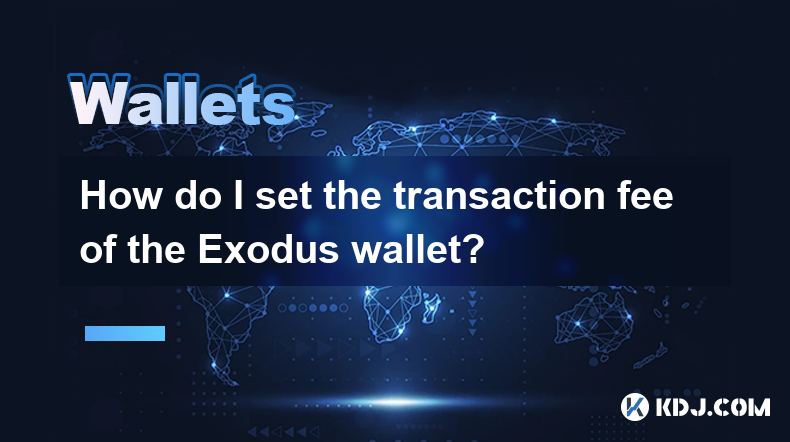
Setting the transaction fee in the Exodus wallet is a crucial aspect of managing your cryptocurrency transactions effectively. The transaction fee determines how quickly your transaction will be processed on the blockchain. In this article, we will guide you through the process of setting the transaction fee in the Exodus wallet, ensuring you can optimize your transactions for speed and cost.
Understanding Transaction Fees in Exodus
Before diving into the steps to set the transaction fee, it's important to understand what transaction fees are and why they matter. Transaction fees are payments made to miners or validators on the blockchain network for processing and confirming your transactions. In the Exodus wallet, these fees can be adjusted to prioritize your transaction's speed or to save on costs.
Accessing the Transaction Fee Settings
To begin setting your transaction fee in the Exodus wallet, you first need to access the transaction settings. Here's how you can do it:
- Open the Exodus wallet on your device.
- Navigate to the 'Send' section where you initiate transactions.
- Select the cryptocurrency you wish to send.
- Enter the recipient's address and the amount you want to send.
- Look for the 'Transaction Fee' or 'Network Fee' option, usually located below the amount field.
Adjusting the Transaction Fee
Once you have accessed the transaction fee settings, you can adjust the fee according to your preferences. Exodus typically offers three fee options: 'Low', 'Medium', and 'High'. Here's how to adjust the fee:
- Click on the 'Transaction Fee' dropdown menu.
- Choose from the available options: 'Low' for the cheapest and slowest option, 'Medium' for a balanced approach, and 'High' for the fastest processing time.
- If you want more control, some cryptocurrencies in Exodus allow you to set a custom fee. Look for a 'Custom' option if available, and enter your desired fee amount.
Considerations When Setting the Transaction Fee
When setting your transaction fee, consider the following factors to make an informed decision:
- Transaction Urgency: If you need your transaction to be processed quickly, opt for a higher fee. This is particularly important during times of high network congestion.
- Cost Savings: If you are not in a hurry, choosing a lower fee can save you money, though it may take longer for your transaction to be confirmed.
- Network Conditions: Check the current state of the blockchain network. During peak times, even a 'High' fee might not guarantee quick processing, while during off-peak times, a 'Low' fee might suffice.
Confirming and Sending the Transaction
After setting your desired transaction fee, you need to confirm and send the transaction. Here's how to proceed:
- Review all the transaction details, including the recipient's address, the amount, and the selected transaction fee.
- If everything looks correct, click on the 'Send' or 'Confirm' button to initiate the transaction.
- You will be prompted to enter your wallet password or use your biometric authentication to finalize the transaction.
- Once confirmed, the transaction will be broadcast to the blockchain network, and you can track its progress in the Exodus wallet.
Monitoring and Adjusting Fees Post-Transaction
After sending a transaction, you might want to monitor its status and possibly adjust future fees based on your experience. Here's what you can do:
- Use the 'Transactions' tab in Exodus to track the status of your sent transaction.
- If the transaction is taking longer than expected, consider increasing the fee for future transactions during similar network conditions.
- Keep an eye on the network's fee trends and adjust your strategy accordingly to balance speed and cost effectively.
Advanced Tips for Optimizing Transaction Fees
For users looking to further optimize their transaction fees, consider these advanced tips:
- Batch Transactions: If you need to send multiple transactions, consider batching them into a single transaction to save on fees.
- Use SegWit Addresses: For Bitcoin transactions, using SegWit addresses can significantly reduce fees.
- Stay Informed: Regularly check cryptocurrency forums and resources to stay updated on the best practices for managing transaction fees.
Common Questions About Setting Transaction Fees in Exodus
Q: Can I change the transaction fee after sending a transaction in Exodus?
A: No, once a transaction is sent, the fee cannot be changed. It's important to set the fee correctly before sending.
Q: What happens if I set the transaction fee too low in Exodus?
A: If the fee is too low, your transaction might take longer to be confirmed or might not be confirmed at all during times of high network congestion.
Q: Does Exodus charge any additional fees for setting transaction fees?
A: No, Exodus does not charge any additional fees for setting transaction fees. The fees you set are paid directly to the blockchain network.
Q: How can I estimate the optimal transaction fee in Exodus?
A: You can use online fee estimators or check the current network conditions to estimate the optimal fee. Exodus also provides suggested fee levels based on current network conditions.
Q: Can I set a custom transaction fee for all cryptocurrencies in Exodus?
A: Not all cryptocurrencies in Exodus support custom fee settings. Check the specific cryptocurrency's settings to see if custom fees are available.
By following these steps and considering the factors mentioned, you can effectively manage your transaction fees in the Exodus wallet, ensuring your transactions are processed efficiently and cost-effectively.
Disclaimer:info@kdj.com
The information provided is not trading advice. kdj.com does not assume any responsibility for any investments made based on the information provided in this article. Cryptocurrencies are highly volatile and it is highly recommended that you invest with caution after thorough research!
If you believe that the content used on this website infringes your copyright, please contact us immediately (info@kdj.com) and we will delete it promptly.
- "Cardano (ADA) Price Could Dip Below $0.60, Following Previous Market Cycle"
- 2025-04-09 05:10:12
- BONK, the well-known meme coin, has risen over 35% in the last week, attracting meme coin investors in the market. So, what caused this rally?
- 2025-04-09 05:10:12
- Bitcoin (BTC) Investors May Not Exactly Feel It, but BTC Has Been a Relatively Good Bet
- 2025-04-09 05:05:12
- Donald's Bitcoin (DONBTC) Could Turn Early Investors into Multi-Millionaires, Like Shiba Inu (SHIB) and Dogecoin (DOGE) Did
- 2025-04-09 05:05:12
- 6 Upcoming Kraken Listings That Could Be the Next Big Thing in Crypto
- 2025-04-09 05:00:13
- COTI Unveils New Privacy-Focused Blockchain to Reshape Web3 Transactions
- 2025-04-09 05:00:13
Related knowledge
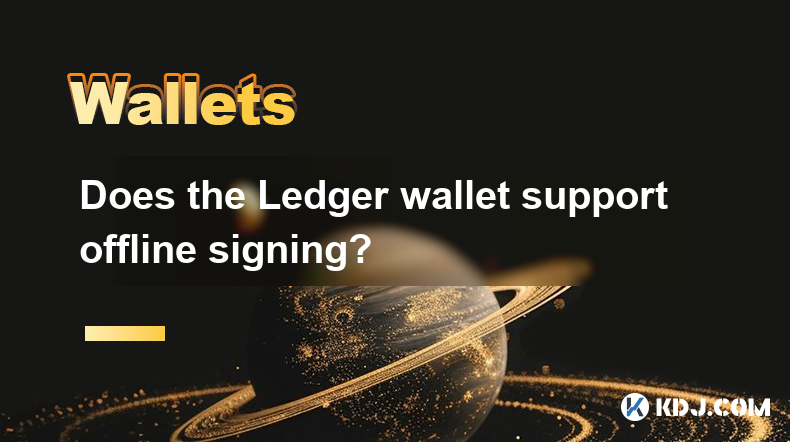
Does the Ledger wallet support offline signing?
Apr 09,2025 at 04:49am
Introduction to Ledger Wallet and Offline SigningThe Ledger wallet is a popular hardware wallet used by cryptocurrency enthusiasts to securely store their digital assets. One of the key features that users often inquire about is offline signing. Offline signing, also known as cold signing, is a security measure that allows users to sign transactions wit...
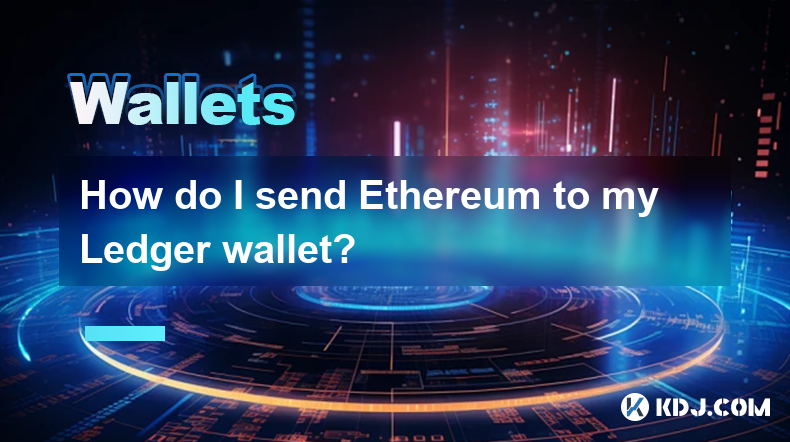
How do I send Ethereum to my Ledger wallet?
Apr 09,2025 at 03:21am
Sending Ethereum to your Ledger wallet involves a few straightforward steps, but it's crucial to follow them carefully to ensure the security of your funds. In this guide, we'll walk you through the process of transferring Ethereum to your Ledger wallet, ensuring that you understand each step and the necessary precautions. Preparing Your Ledger WalletBe...
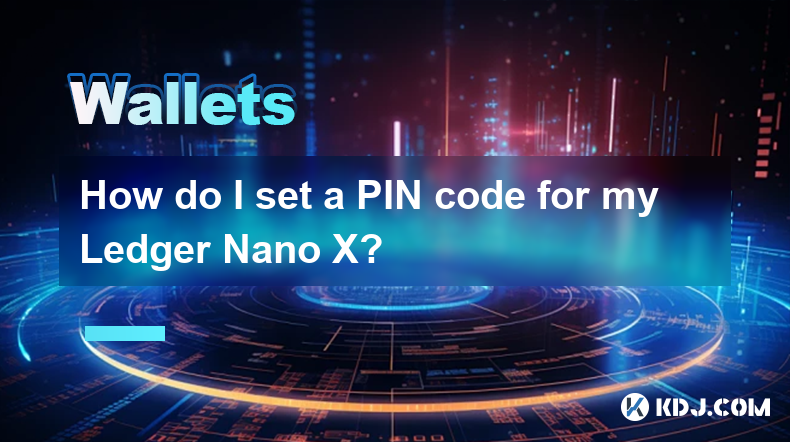
How do I set a PIN code for my Ledger Nano X?
Apr 08,2025 at 11:14pm
Setting a PIN code for your Ledger Nano X is a crucial step in securing your cryptocurrency assets. The PIN code acts as a primary layer of security, ensuring that only you can access your device. In this article, we will guide you through the process of setting up a PIN code on your Ledger Nano X, ensuring that you follow each step meticulously to main...
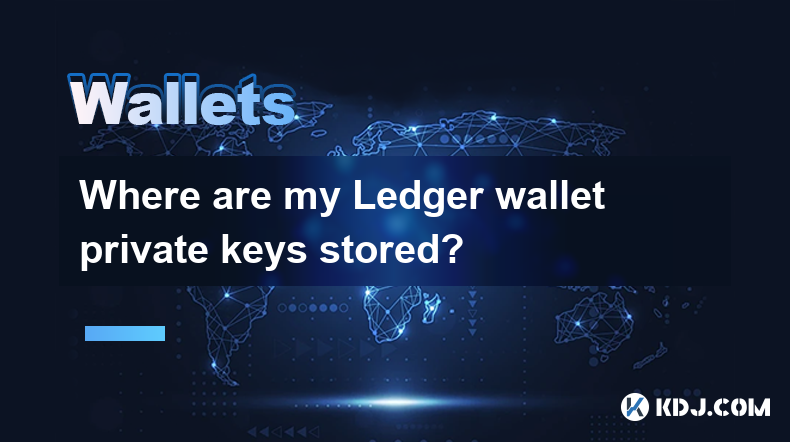
Where are my Ledger wallet private keys stored?
Apr 08,2025 at 10:35pm
When using a Ledger hardware wallet, one of the most critical aspects to understand is the storage and management of your private keys. This article will delve into the specifics of where your Ledger wallet private keys are stored, ensuring you have a comprehensive understanding of their security and accessibility. Understanding Private Keys in Ledger W...
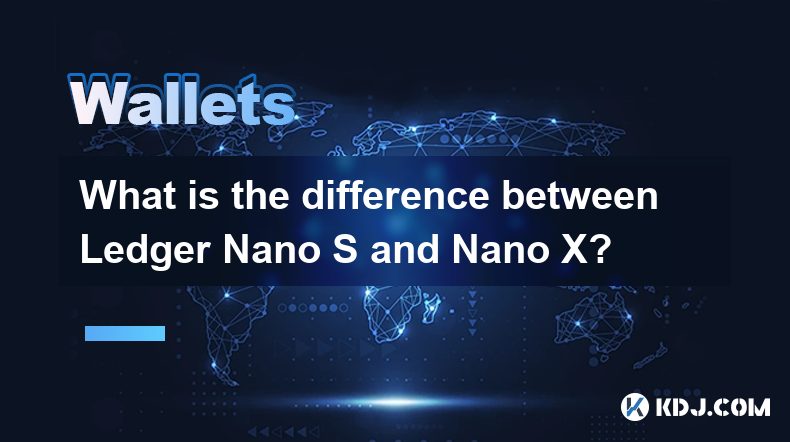
What is the difference between Ledger Nano S and Nano X?
Apr 09,2025 at 12:49am
When it comes to securing your cryptocurrencies, hardware wallets are often recommended as the safest option. Among the most popular hardware wallets are the Ledger Nano S and Ledger Nano X. Both devices are produced by Ledger, a well-known company in the cryptocurrency security industry. This article will delve into the differences between these two de...

How do I enable the Shield Transaction feature on Trezor?
Apr 08,2025 at 10:28pm
Enabling the Shield Transaction feature on Trezor involves a series of steps that allow you to enhance the privacy of your cryptocurrency transactions. This feature is particularly useful for users who want to protect their transaction history from being easily traced on the blockchain. In this article, we will guide you through the process of enabling ...

Does the Ledger wallet support offline signing?
Apr 09,2025 at 04:49am
Introduction to Ledger Wallet and Offline SigningThe Ledger wallet is a popular hardware wallet used by cryptocurrency enthusiasts to securely store their digital assets. One of the key features that users often inquire about is offline signing. Offline signing, also known as cold signing, is a security measure that allows users to sign transactions wit...

How do I send Ethereum to my Ledger wallet?
Apr 09,2025 at 03:21am
Sending Ethereum to your Ledger wallet involves a few straightforward steps, but it's crucial to follow them carefully to ensure the security of your funds. In this guide, we'll walk you through the process of transferring Ethereum to your Ledger wallet, ensuring that you understand each step and the necessary precautions. Preparing Your Ledger WalletBe...

How do I set a PIN code for my Ledger Nano X?
Apr 08,2025 at 11:14pm
Setting a PIN code for your Ledger Nano X is a crucial step in securing your cryptocurrency assets. The PIN code acts as a primary layer of security, ensuring that only you can access your device. In this article, we will guide you through the process of setting up a PIN code on your Ledger Nano X, ensuring that you follow each step meticulously to main...

Where are my Ledger wallet private keys stored?
Apr 08,2025 at 10:35pm
When using a Ledger hardware wallet, one of the most critical aspects to understand is the storage and management of your private keys. This article will delve into the specifics of where your Ledger wallet private keys are stored, ensuring you have a comprehensive understanding of their security and accessibility. Understanding Private Keys in Ledger W...

What is the difference between Ledger Nano S and Nano X?
Apr 09,2025 at 12:49am
When it comes to securing your cryptocurrencies, hardware wallets are often recommended as the safest option. Among the most popular hardware wallets are the Ledger Nano S and Ledger Nano X. Both devices are produced by Ledger, a well-known company in the cryptocurrency security industry. This article will delve into the differences between these two de...

How do I enable the Shield Transaction feature on Trezor?
Apr 08,2025 at 10:28pm
Enabling the Shield Transaction feature on Trezor involves a series of steps that allow you to enhance the privacy of your cryptocurrency transactions. This feature is particularly useful for users who want to protect their transaction history from being easily traced on the blockchain. In this article, we will guide you through the process of enabling ...
See all articles






















































































